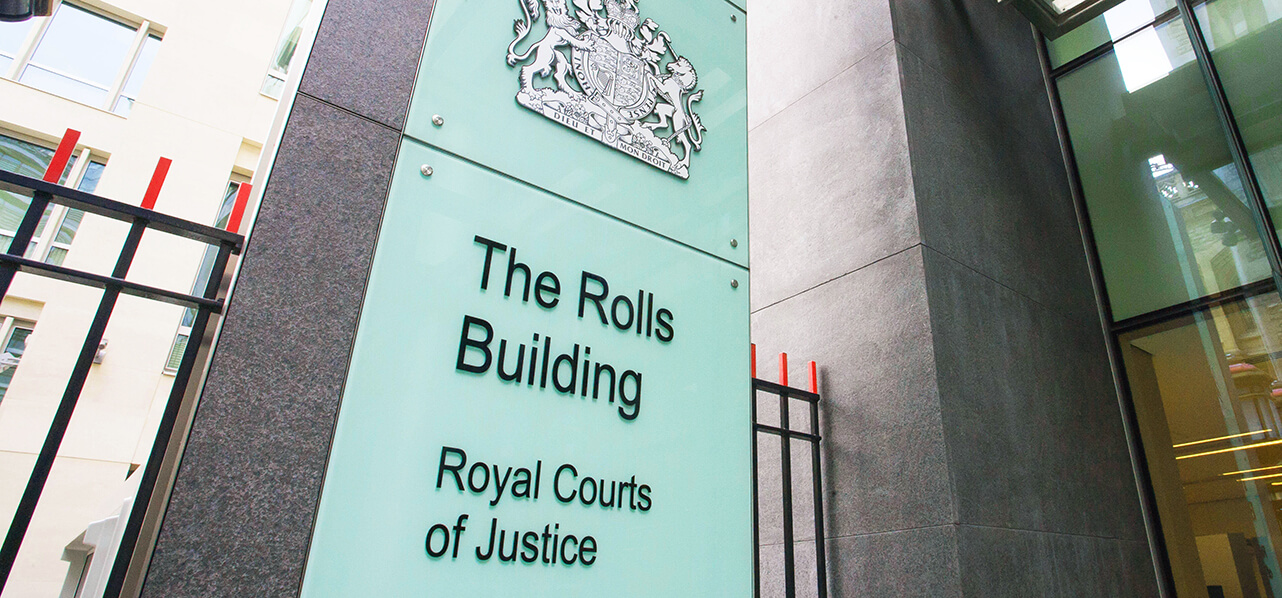Consultant Singapore
"Under English law, the relationship between the order party and the warehouse is a bailment evidenced by the WHR."
Introduction
There has been a spate of cases involving nickel fraud in recent years. One such case involved warehouse receipts (“WHR”) issued by Access World in 2016 which resulted in recent decisions in Natixis S.A. (“Natixis”) v Marex Financial (“Marex”) and Access World Logistics (Singapore) Pte Ltd (2019) EWHC 2599 (Comm), ED&F Man Capital Markets Limited (“MCM”) v Come Harvest Holdings Limited (“Come Harvest”) and others (2022) EWHC 229 (Comm) and (2022) EWCA Civ 1704 and ANZ Commodity Trading Pty Ltd (“ANZ”) v Excellent Raise Overseas Limited and others (2023) HKCFI 179. As the cases show, the fraudsters went to great lengths to dupe their counterparties and with considerable success for some 18 months or more whilst they pocketed more than US$326m.
All these cases are, in fact, linked to a series of frauds perpetrated by the same fraudsters with the common denominator being that all involved WHR purportedly issued by Access World to Straits Financial (“Straits”), who provided colour scanned copies to two Hong Kong companies (Come Harvest and Mega Wealth International Limited (“Mega Wealth”)) with minimal capitalisation, which were then delivered to the claimants in each of the above cases as part of contingent repo arrangements. These copies were then used by the fraudsters to reproduce WHR with the same details, were passed off as genuine and, consequently, substantial losses were incurred by the financing banks.
"It is settled that, under English law and some other common law regimes, a WHR is not a document of title and only gives the holder a right to possession of the goods."
Background
The two sets of transactions involving Natixis and Marex in the first case and ANZ and MCM in the second and third cases explore some common themes and examine the effect and operation of WHR. In fact, those two sets of transactions were part of a set of five executed in series as part of a Ponzi scheme between July 2015 and January 2017, which involved a substantial portion of the proceeds of sale legs of later repos paying the amounts due under earlier repurchase legs. This concealed the use of forged WHR in those earlier transactions, thereby prolonging the scheme until it fell over in January 2017 after the production of 200+ forged WHR in all five sets of transactions. That the fraud lasted more than 18 months is due to a combination of factors but was essentially based on too much trust in the use of WHR to underpin the repos and a lack of understanding of the fraud risk.
Nickel was the metal of choice for the repos, all of which was London Metal Exchange (“LME”) approved brand and quality held on endorsable paper WHR as opposed to LME warrants held in the secure centralised registry, LMEsword. That crucial difference between warrants and WHR which have no central record other than with the issuer proved to be crucial to the fraud being perpetrated. For Marex, it was apparently their first ever WHR financing business as previously they had only been involved in financing LME warrants. For MCM, it seems the person handling the financing business had never been involved in repo financing using WHR prior to the subject set of transactions. The fraud risk was not properly appreciated at the time or addressed
The issues
Since the WHR involved in all three cases were forged, neither Marex nor MCM obtained any title from their seller (Come Harvest or Mega Wealth) and therefore, on the nemo dat quod non habet principle, neither Natixis nor ANZ obtained good title to the metal, did not receive any nickel or genuine WHR, or any rights to possession. Following the Qingdao fraud in 2014, there were wholescale amendments to repo documentation to put the fraud risk firmly on sellers to provide genuine WHR and the repos in these cases provided similarly. The decisions also address other issues, particularly in relation to the elements required to prove conspiracy by unlawful means, defences to unjust enrichment claims, tracing of funds, mitigation of loss and the impact of a settlement agreement between MCM and ANZ on claims over against the fraudsters. These would merit comment on their own, but this article focusses on the use of warehouse receipts.
Material findings
"An additional reason for requiring fresh paper is that the warehouse will issue a WHR to the order of the presenter and record their name in its records as the 'owner' of the goods."
1. The relationship of the warehouse with the first order party and subsequent endorsees of the WHR differs.
Under English law (and some other common law jurisdictions), the relationship between the order party and the warehouse is a bailment evidenced by the WHR. Further, no unilateral contract arises with the warehouse even on endorsement by the current holder in blank followed by delivery of the WHR to the transferee. A subsequent holder will need an attornment¹ by the warehouse to transfer constructive possession of the metal from the seller to the buyer.² Until attornment, the relationship with the warehouse remains with the order party.
2. Attornment
The issue of whether the requirement for attornment can be excluded by contract was moot in Mercuria Energy Trading Pte Ltd and the better view is to play safe and ensure the requirement is met either by ensuring the seller requires the warehouse to acknowledge directly to the buyer that it holds the goods to its order or on endorsement, the buyer surrenders the existing WHR for cancellation and a fresh WHR issued with the buyer as order party.
3. Document of Title
It is settled that, under English law and some other common law regimes,³ a WHR is not a document of title and only gives the holder a right to possession of the goods.⁴ However, a warehouse is not concerned with issues of title, at least until it receives competing claims. It may, in fact, never know who has title, although the right to possession and title often go hand in hand. It will deliver to the party presenting a genuine WHR provided there is an endorsement by at least the order party (there are usually multiple boxes for endorsement on the reverse).
"It is clear from the judgments, a number of banks declined to participate in refinancing the transactions because they required fresh paper to be issued to their order and Come Harvest was unwilling to permit this."
4. Storage fees
The warehouse will look to the order party for payment of the storage fees or rent. In the above cases, rent was paid by Straits because it always held the metal, or its bankers held the WHR and Straits contractually agreed to discharge that obligation. Under the repos, MCM agreed with ANZ to pay and then delegated that obligation to its seller, Come Harvest, but no check was made as to who was actually paying rent (and it was being paid each month by Straits). If it had been, it may be that the fraud would have been exposed earlier.
5. Counterparty risk and fraud risk
ANZ and quite likely Natixis too, took comfort in their respective counterparty being a well-recognised broker in the LME market. However, there was still considerable counterparty risk in that their own counterparty was exposed to a thinly capitalised seller, particularly for ANZ when there was a US$300m claim against MCM with poor prospects for MCM’s recovery action against Come Harvest by reason of the latter’s modest balance sheet.
In the Natixis case, in the context of considering contributory negligence, it was held that (a) proper due diligence should be carried out on a counterparty and proper account should be taken of what was known or should have been known about the counterparty and (b) reasonable steps should be taken to minimize the known risk of WHR fraud. From the judgments, it seems both Marex and MCM undertook relatively minimal due diligence of their counterparty, Come Harvest, and faced significant claims from ANZ and Natixis with limited prospects of enforcing any recourse action against Come Harvest.
As for fraud risk, the warning sign was the refusal of Come Harvest to allow MCM or Marex to obtain fresh WHR (which would have involved authentication of the existing WHR as part of the re-issue process) with no adequate explanation other than an insistence on “same paper in, same paper out”. It is clear from the judgments, a number of banks declined to participate in refinancing the transactions because they required fresh paper to be issued to their order and Come Harvest was unwilling to permit this.
"The WHR were all supposed to be issued on special security paper containing certain pre-printed features in a particular set of colours and with an embossed logo of Access World together with some disguised security features."
6. Counterfeiting WHR
The WHR were all supposed to be issued on special security paper containing certain pre-printed features in a particular set of colours and with an embossed logo of Access World together with some disguised security features. In the ANZ case, it is now known the forged WHR came predominantly from Shanghai and were good enough to pass at least cursory inspection in handling by MCM and ANZ and the same is likely to be true of those WHR handled by Marex and Natixis. Production of WHR is a long way from the sophisticated process for preventing the counterfeiting of banknotes with its security threads, holograms and special material such as laminates and starchless paper, though the Natixis judgment hints that Access World in 2016 had used special security features in their WHR. If they did, then these can only assist if the WHR are presented for authentication. Blockchain and the use of electronic WHR would eliminate that particular counterfeiting risk almost entirely.
A repeat of the means and process by which the fraudsters managed to perpetuate the fraud which was the subject of the three cases above is very unlikely but without appreciation of the fraud risk around the use of paper WHR, some variant is always possible.
The author represented ANZ in the Hong Kong proceedings.
Footnotes
[1] S.29(4) Sale of Goods Act (UK)
[2] Mercuria Energy Trading Pte Ltd v Citibank N.A. (2015) EWHC 1481 (Comm) at [59}
[3] In the USA, a WHR is a document of title (Uniform Commercial Code Article 7)
[4] Impala Warehousing and Logistics (Shanghai) Co Ltd v Wanxiang Resources (Singapore) Pte Ltd 92015) EWHC 811 (Comm) at [55]




